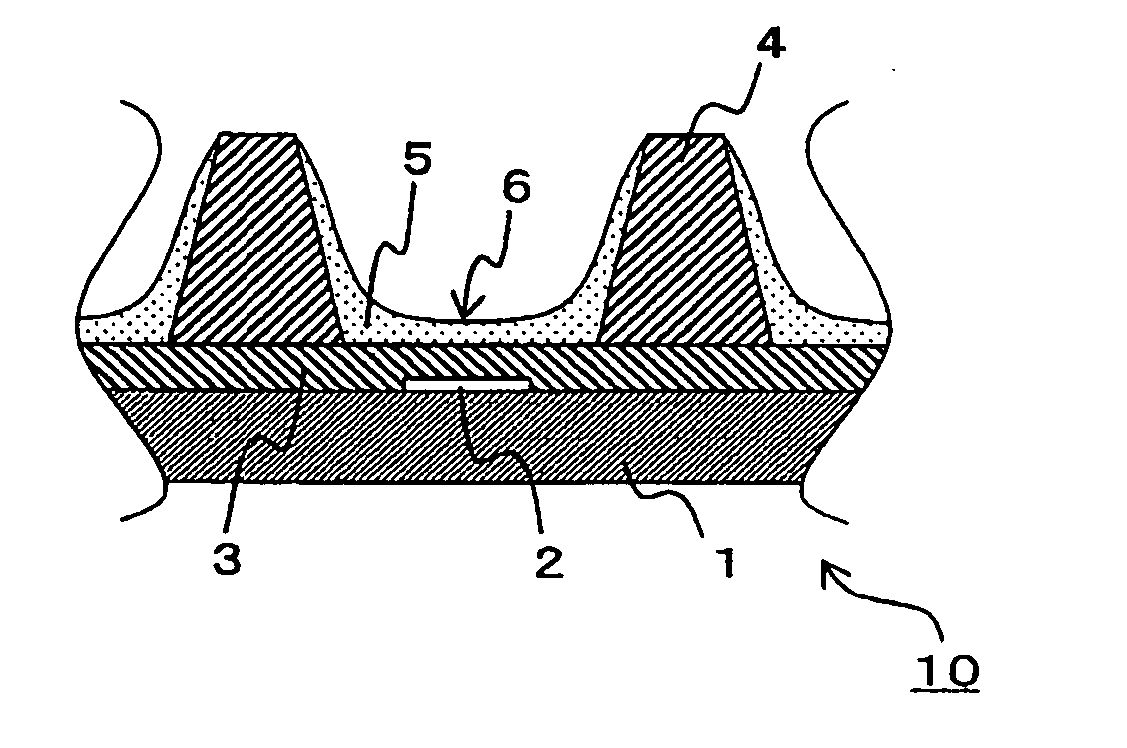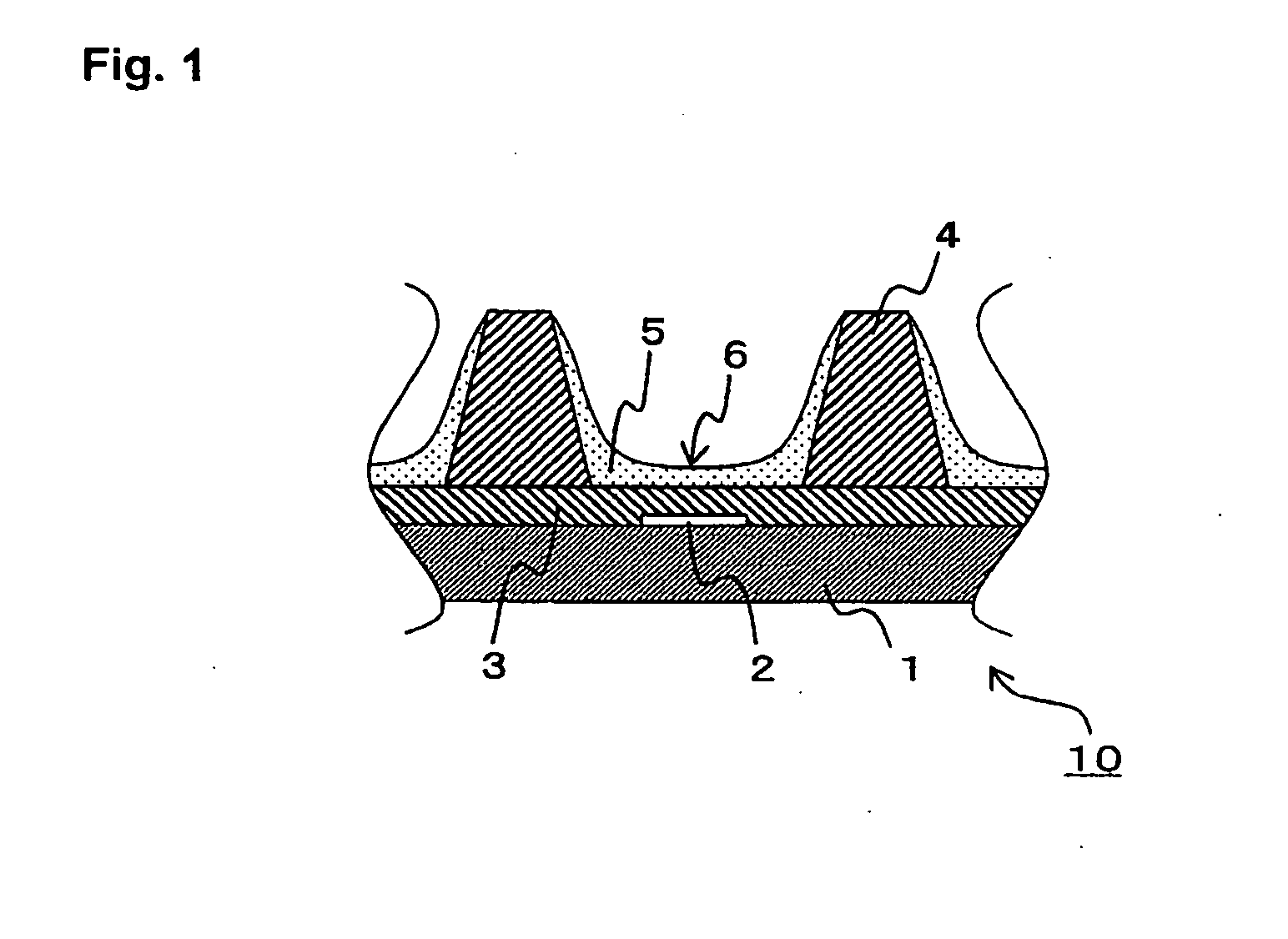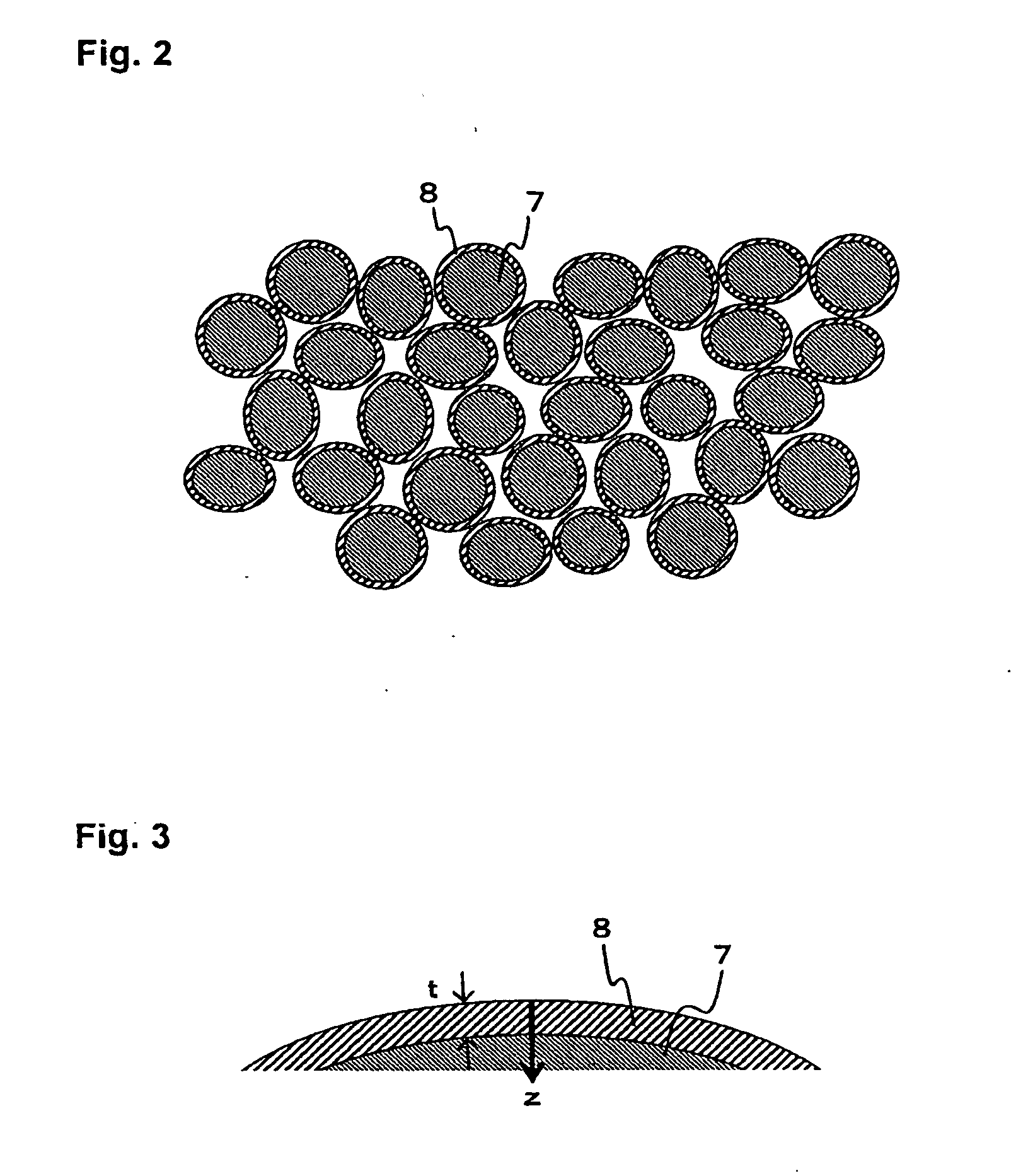Plasma display panel and process for producing the same and thin film
a technology of display panel and thin film, applied in the manufacture of electrodes, electrode systems, electric discharge tubes/lamps, etc., can solve the problems of low luminance, poor uv transmittance of film, and difficult fluoride film formation, etc., to reduce the degradation of luminance, reduce the amount of fluorine atoms, and reduce the effect of fluoride atom diffusion
- Summary
- Abstract
- Description
- Claims
- Application Information
AI Technical Summary
Benefits of technology
Problems solved by technology
Method used
Image
Examples
first embodiment
[0088] First Embodiment
[0089] This embodiment relates to a PDP and a process for producing it in which the whole surface of each phosphor particle is covered with a coating made of a fluoride such as magnesium fluoride.
[0090] A PDP of the present embodiment is constructed by positioning a rear plate 10 shown in FIG. 1 to be opposed to a front plate (not shown) and form discharge spaces therebetween while locating a phosphor layer 6 inside, and by filling the discharge spaces with a discharge gas. In the rear plate 10, address electrodes 2 (one of which is shown in FIG. 1) are located on a rear substrate 1 which is generally made of glass, and a dielectric layer 3 covers the rear substrate 1 with the address electrodes 2. A plurality of ribs 4 is located on the dielectric layer 3 and each address electrode 2 is situated between the adjacent ribs 4. A phosphor layer 5 is formed between the adjacent ribs on a surface of the dielectric layer 3 covering the rear substrate 1 (as well as ...
second embodiment
[0118] Second Embodiment
[0119] This embodiment relates to a PDP and a process for producing it in which the whole surface of each phosphor particle is covered with a coating made of a fluoride-containing phosphor substance.
[0120] A PDP of the present embodiment may have a similar structure to that of the PDP of the first embodiment described above with reference to FIGS. 1 to 3, except for a material of a coating. A coating in the present embodiment is made of a fluoride-containing phosphor substance. In a case for a blue phosphor particle, for example, the coating includes atoms of fluorine, europium, barium, aluminum, magnesium and oxygen. In a case for a red phosphor particle, the coating includes atoms of fluorine, europium, yttrium and oxygen. In a case for a green phosphor particle, the coating includes atoms of fluorine, manganese, barium, aluminum and oxygen.
[0121] A thickness of the coating is preferably about 1 to 5 nm. A coating having a thickness less than 1 nm can not...
third embodiment
[0127] Third Embodiment
[0128] This embodiment relates to a PDP and a process for producing it in which the whole surface of each phosphor particle is covered with a coating made of a fluorine-added silicon oxide layer and a silicon oxide layer.
[0129] A PDP of the present embodiment may have a similar structure to that of the PDP of the first embodiment described above with reference to FIG. 1, except for a material and a structure of a coating. As shown in FIGS. 7 and 8, a coating in the present embodiment is made of a fluorine-added silicon oxide (SiOF) layer 11 and a silicon oxide (SiO2) layer 12 thereon.
[0130] A thickness of the fluorine-added silicon oxide layer 11 of the coating 8′ is preferably about 1 to 20 nm and more preferably about 1 to 15 nm. A thickness of the silicon oxide layer 12 of the coating 8′ is preferably about 1 to 10 nm and more preferably about 1 to 5 nm. With respect to both layers, a layer having a thickness less than 1 nm can not be formed with high rep...
PUM
| Property | Measurement | Unit |
|---|---|---|
| diameter | aaaaa | aaaaa |
| diameter | aaaaa | aaaaa |
| diameter | aaaaa | aaaaa |
Abstract
Description
Claims
Application Information
 Login to View More
Login to View More - R&D
- Intellectual Property
- Life Sciences
- Materials
- Tech Scout
- Unparalleled Data Quality
- Higher Quality Content
- 60% Fewer Hallucinations
Browse by: Latest US Patents, China's latest patents, Technical Efficacy Thesaurus, Application Domain, Technology Topic, Popular Technical Reports.
© 2025 PatSnap. All rights reserved.Legal|Privacy policy|Modern Slavery Act Transparency Statement|Sitemap|About US| Contact US: help@patsnap.com



